How to focus on errors originating from your codebase and drive team alignment
We’ve said it before, we’ll say it again — not all bugs are worth fixing. Even more than that, not all bugs in the application are your bugs. Sometimes as many as dozens of teams contribute to a shared codebase, all sending errors to the same dashboard. If everyone gets alerted of every error, the process of repairing apps becomes cumbersome and inefficient, and this problem worsens as teams grow.
If this sounds anything like your application development environment, read on as we cover best practices you can employ to drive a culture of code ownership and fix stability issues more efficiently. The outcome? Each team is aligned on which issues they need to focus on and spends less time repairing apps, which prevents issues from impacting additional users and opens up more time for developers to focus on other strategic projects.
Customize your view to show your errors
Unless you’re the sole developer of an application, you probably don’t care about every single error impacting the application’s stability. To focus on the errors that matter to you, segment errors based on where they are occurring in the codebase using fields such as Filename, Method, or Context.
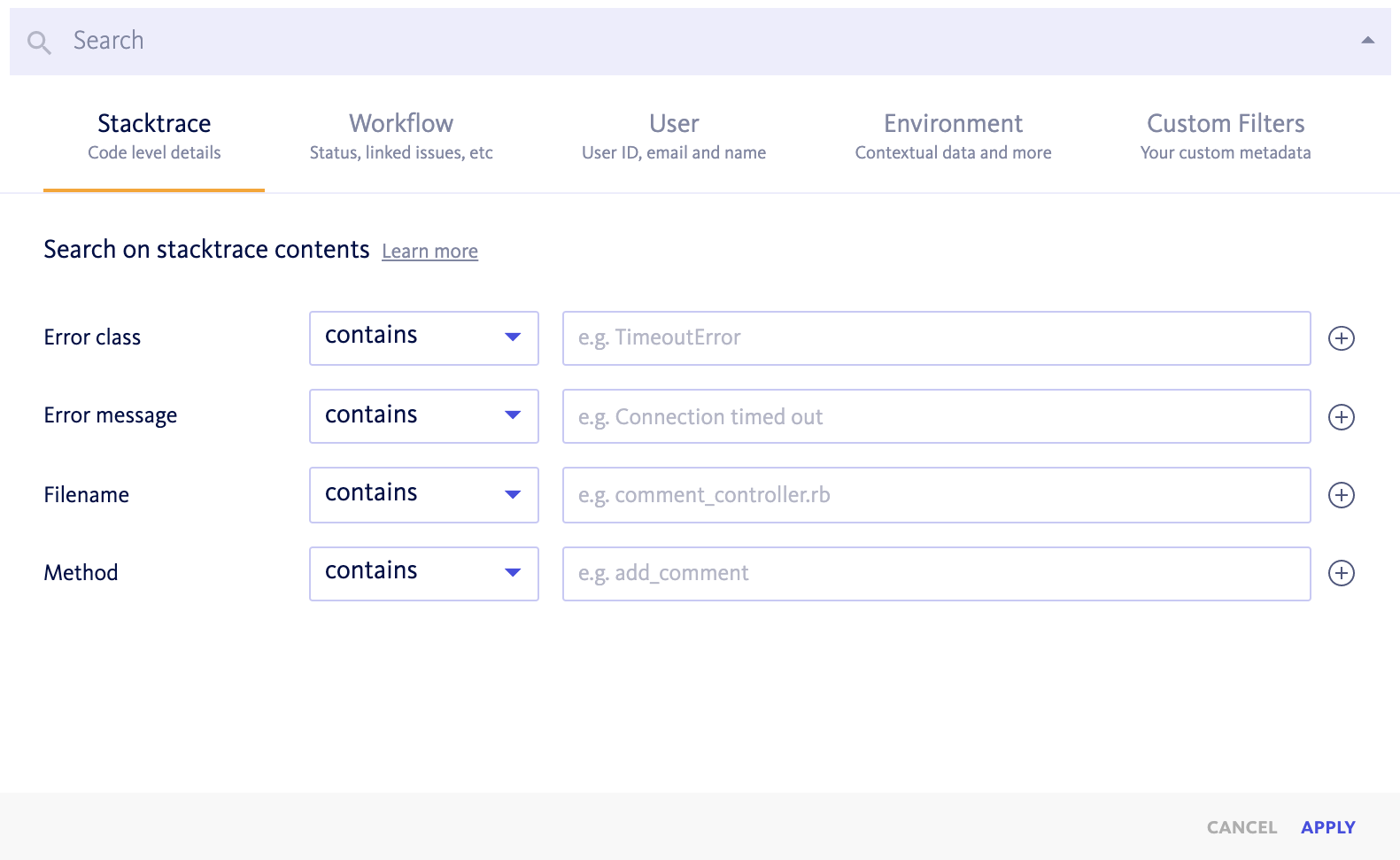
Create a bookmark for this filter, set it as your default bookmark, and watch the noise disappear from your inbox. Drive team alignment and get your whole team to focus on the same errors by sharing the bookmark with them.
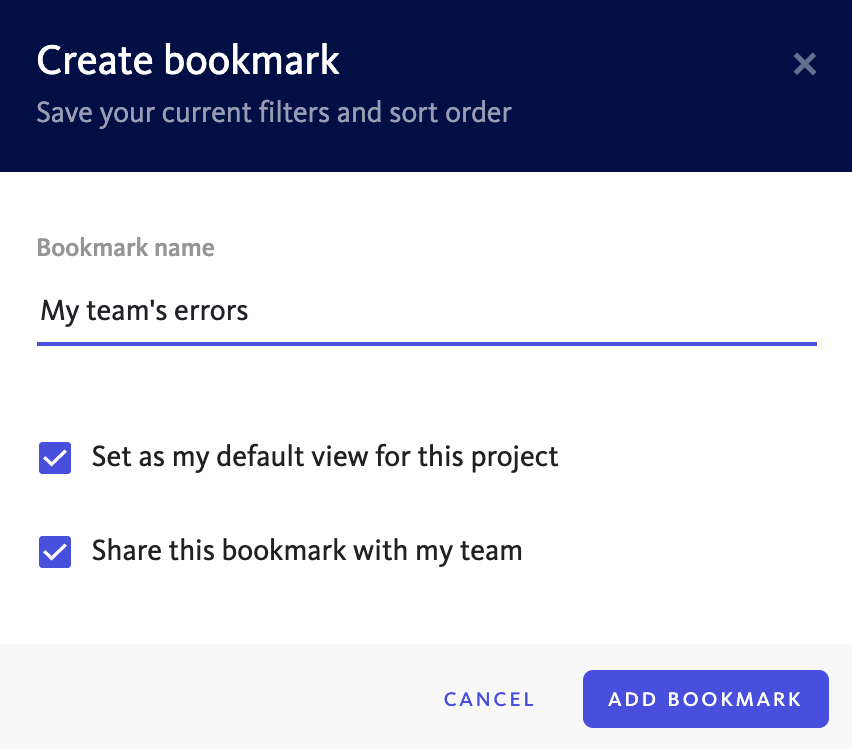
Alert your team of new errors in your codebase
Once you have your team’s bookmark set up, you can use it to set up notifications to deliver updates to your team’s collaboration app, whether you’re using email, Slack, or any other app Bugsnag integrates with. Whether you want to know when there’s a new error, a previously fixed error that’s resurfacing, or a spike in your application, you can use the Alerting and Workflow Engine to filter the notifications based on your team’s bookmark.
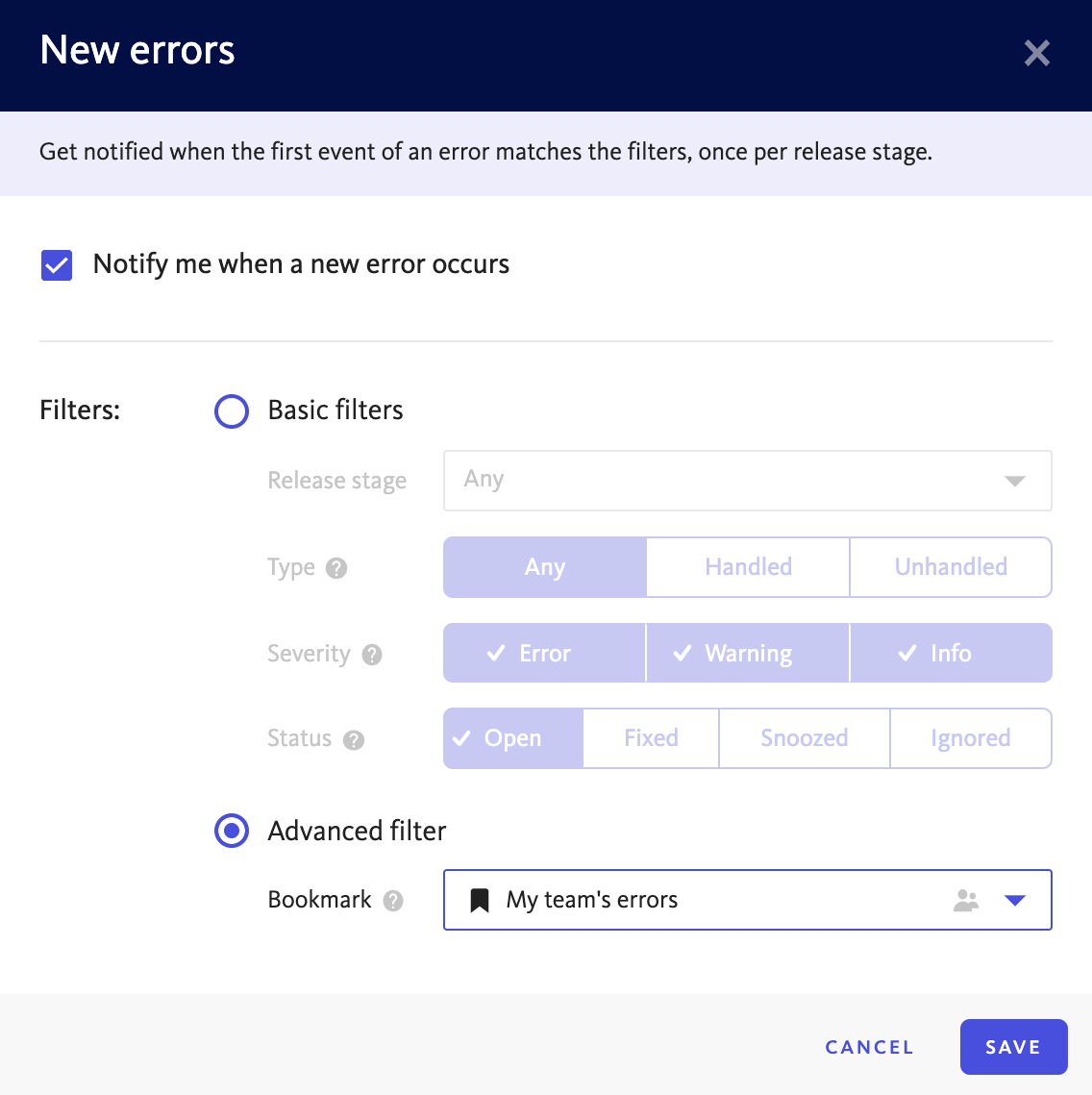
Teleport your team’s errors into your team’s issue tracker
After you’ve been alerted of an error that needs to be fixed, you’ll need to create a ticket in your issue tracker. Choose among the dozens of issue trackers that Bugsnag can integrate with to automatically create an issue linked to a new Bugsnag error. Set up two-way sync if you’re using Jira, Bitbucket, Asana, Github issues, or Pivotal Tracker, which will automatically update the status of your tickets to match the error’s status in Bugsnag. This is a great way to keep on top of errors that have been fixed and are now resurfacing in a new release.
Fine-tune automatic issue creation based on code ownership and error frequency
Use your team’s bookmark to filter the errors that automatically create a linked issue so that only the errors affecting your team’s part of the codebase will be created.
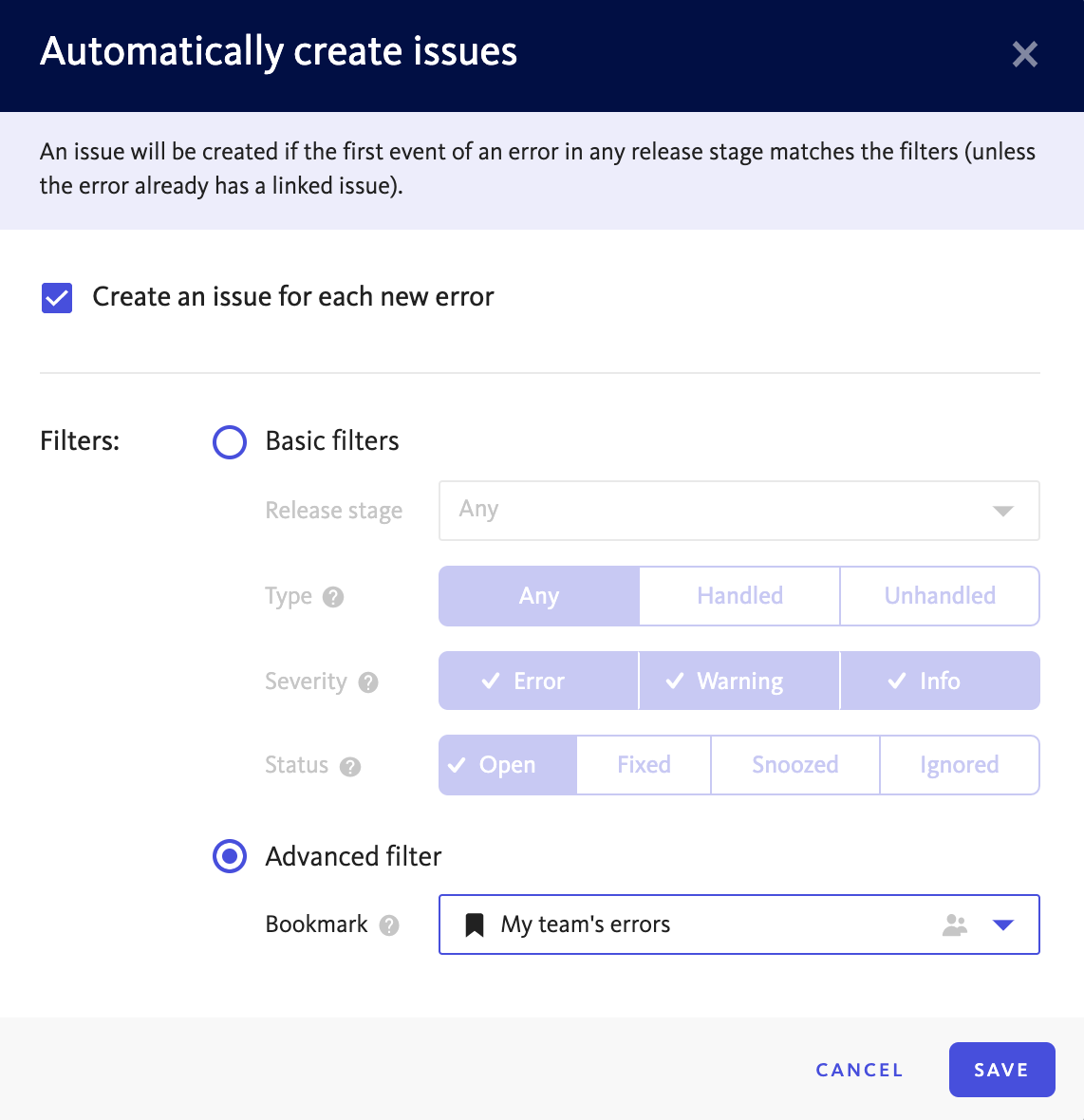
Each team working on a segment of the codebase can configure their own automated issue creation using their team bookmark, so that errors originating in their codebase show up in their issue tracker and they can start triaging and addressing these errors quickly.
To manage the signal-to-noise ratio, set an event frequency threshold for errors to hit before an issue is automatically created. Customize the threshold to be 100 events per week or any other volume that suits your application better.
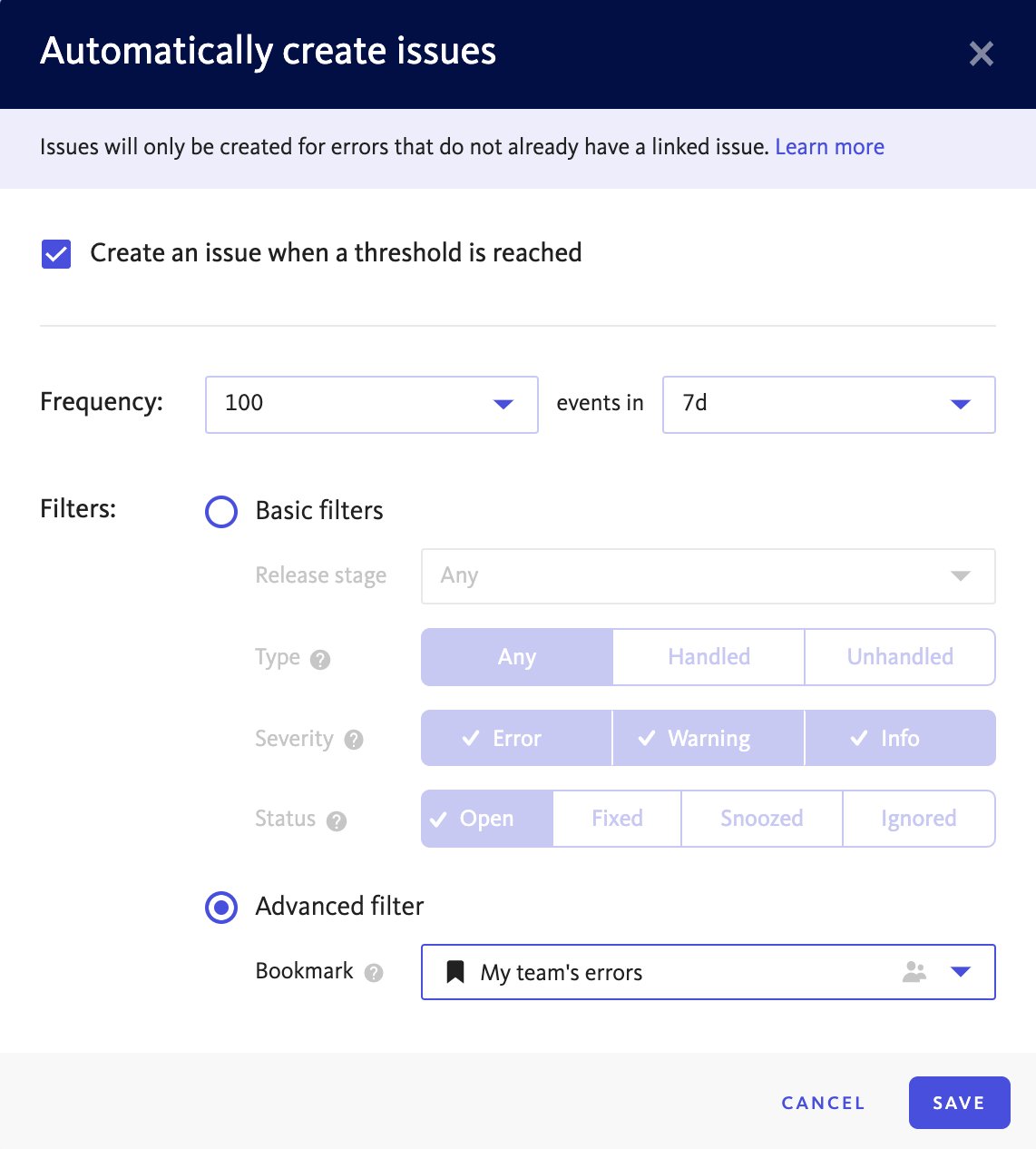
You can also manually create or link issues to an error from the sidebar. Choose to create an issue with an integration you’ve already configured, or simply add the link to an existing issue.

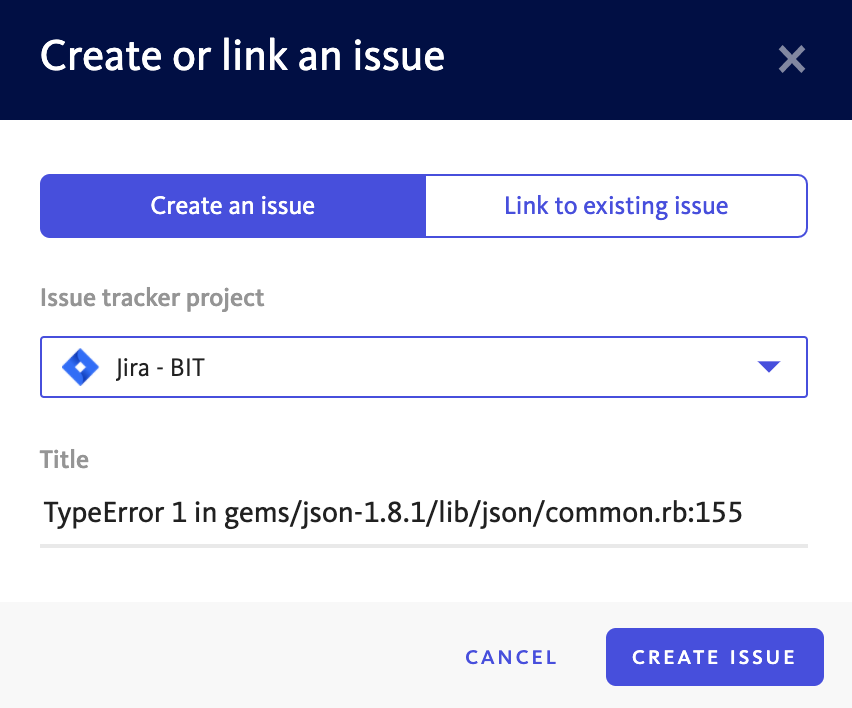
Segmenting errors in the application based on code ownership, and then fine-tuning alerts and workflow integrations can help drive team alignment and allow each team to resolve issues more efficiently. Which can be a win-win — stability issues are fixed before they impact more users and development teams can get back to working on more strategic projects.
If you’re interested in seeing how Bugsnag can help drive code ownership in your engineering team, request a customized demo of our error monitoring and stability management platform.